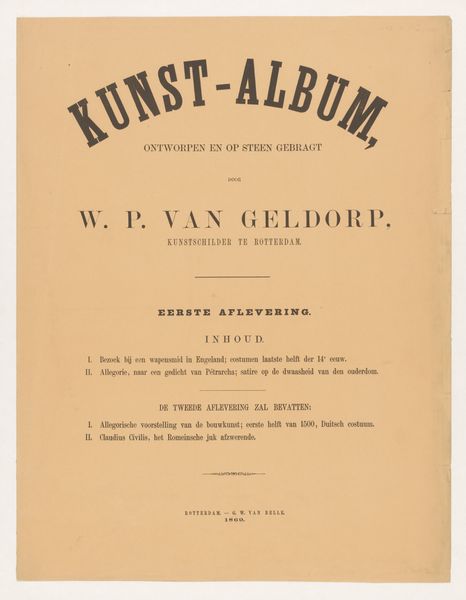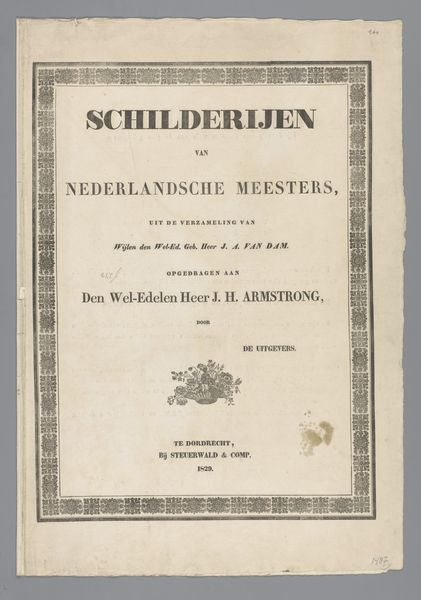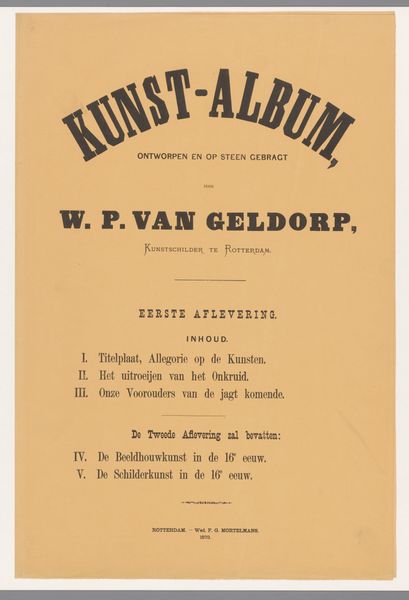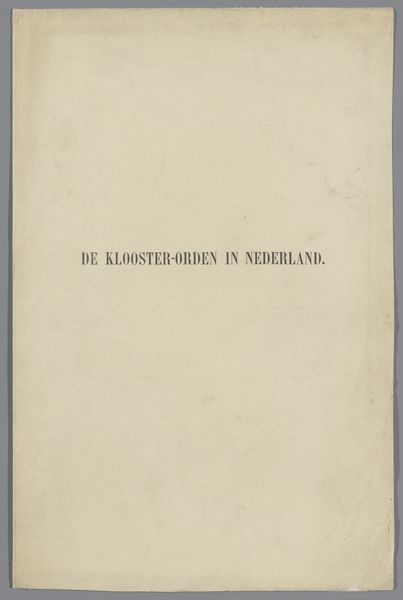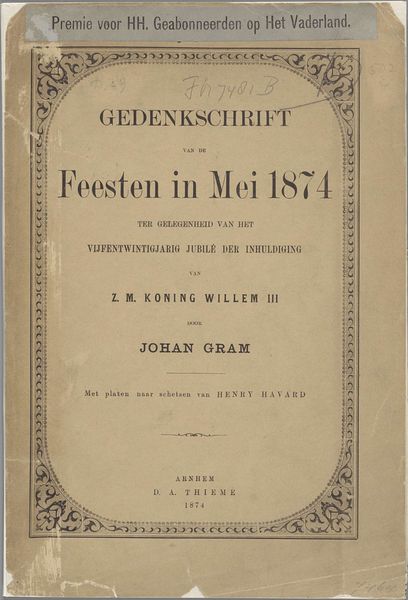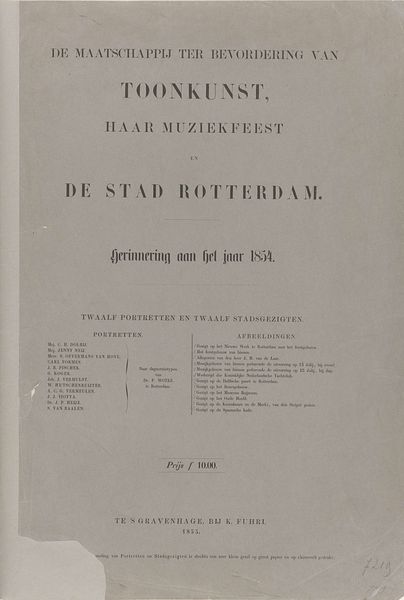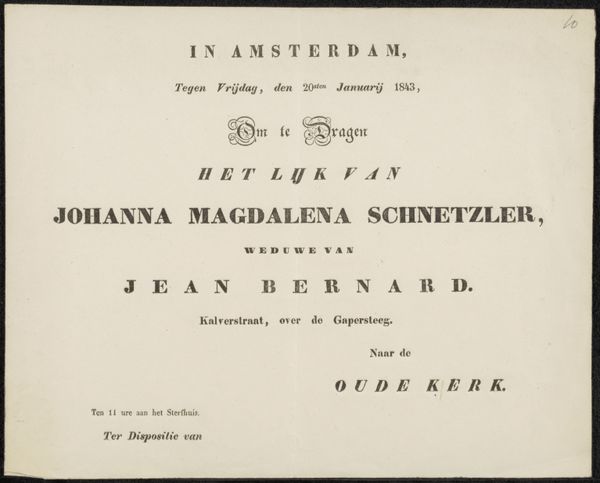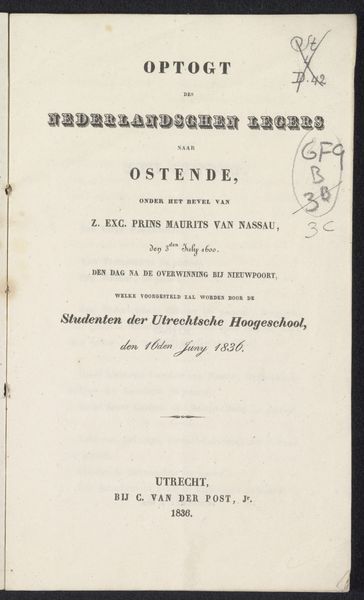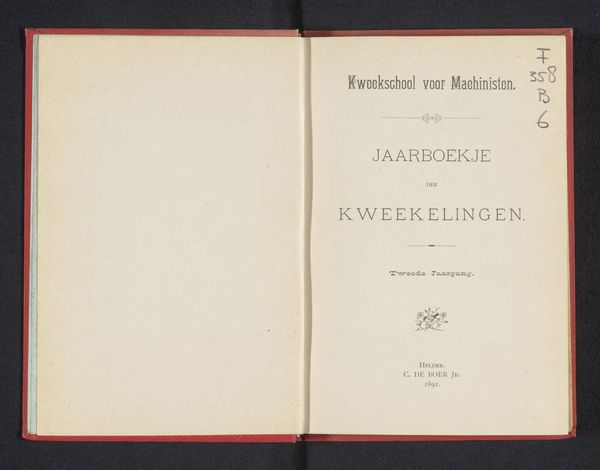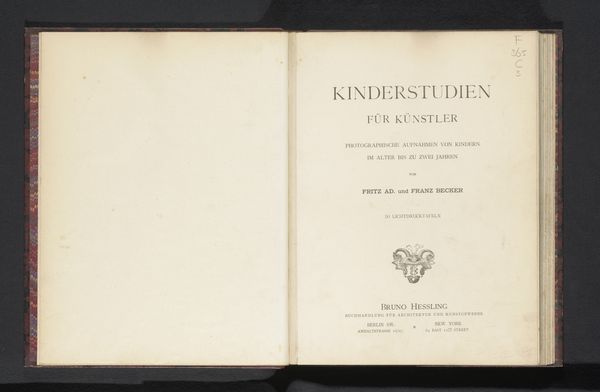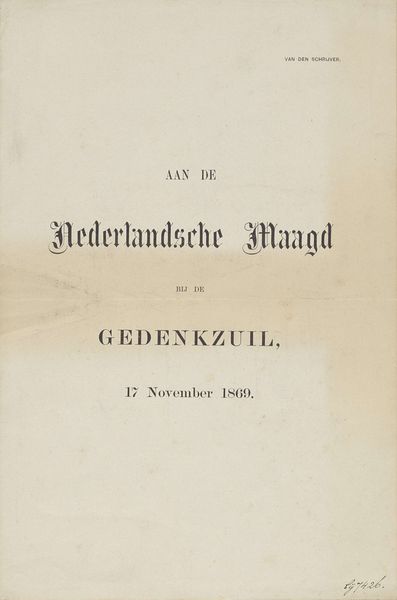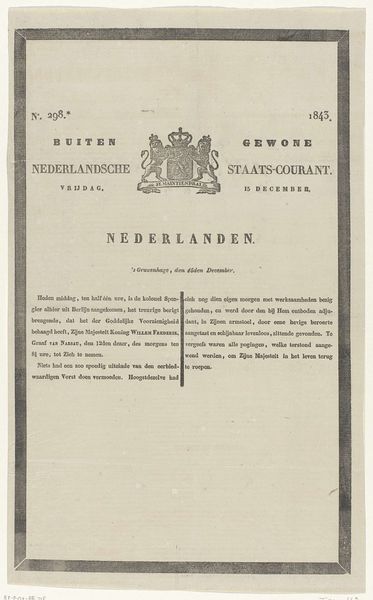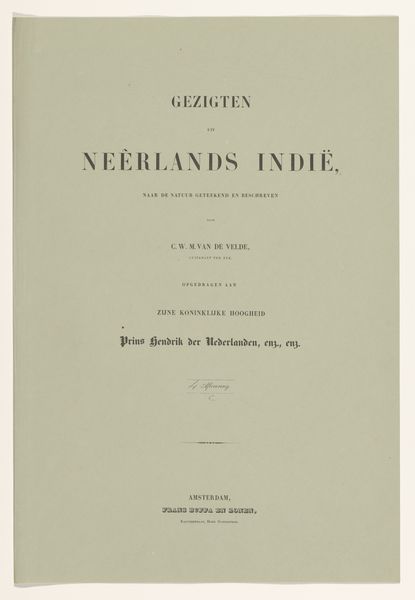
graphic-art, print, typography
#
graphic-art
#
dutch-golden-age
# print
#
typography
Dimensions: height 500 mm, width 330 mm, thickness 30 mm
Copyright: Rijks Museum: Open Domain
Curator: Before us is the cover of “Nederlandsch Kunst-Album,” created in 1871, featuring graphic art, typography and prints. It was produced by Johan Gram, if I'm pronouncing that correctly. Editor: My immediate impression is one of restrained elegance, almost muted. The monochromatic palette and delicate border evoke a sense of formality. It reminds me of invitations or official announcements from that era. Curator: Absolutely. Looking closely, we can consider the social and historical implications of accessible print and graphic design. This cover indicates both the democratizing forces of printing technology alongside the rise of cultural institutions promoting art to a wider audience. Editor: And the font choices are very intentional. The use of a serif typeface speaks to tradition and established authority, whilst the floral vignette gives the piece a distinctly feminine touch. Notice how the placement centers around symbols of Dutch cultural identity. Curator: Let's not forget that these publications are often part of networks of material exchange. Gram’s “Kunst-Album” circulated among particular social strata. How would people use and access images like these at this point in time? Editor: Consider the symbolism within that vignette too. Although small, it might depict a stylized version of a local or national emblem which further ties into a narrative of patriotism. In addition, flowers have complex meanings. It’d be beneficial to consider what the specific type represents about ideals of Dutch heritage. Curator: Indeed, it prompts thoughts about consumption, circulation, and even preservation. Binding together visual imagery into accessible formats. Editor: Pondering on it has revealed an intertwining of social values expressed through graphic and printing methods which allows us to decipher deeper cultural connotations rooted into Dutch 19th century imagery.
Comments
No comments
Be the first to comment and join the conversation on the ultimate creative platform.
